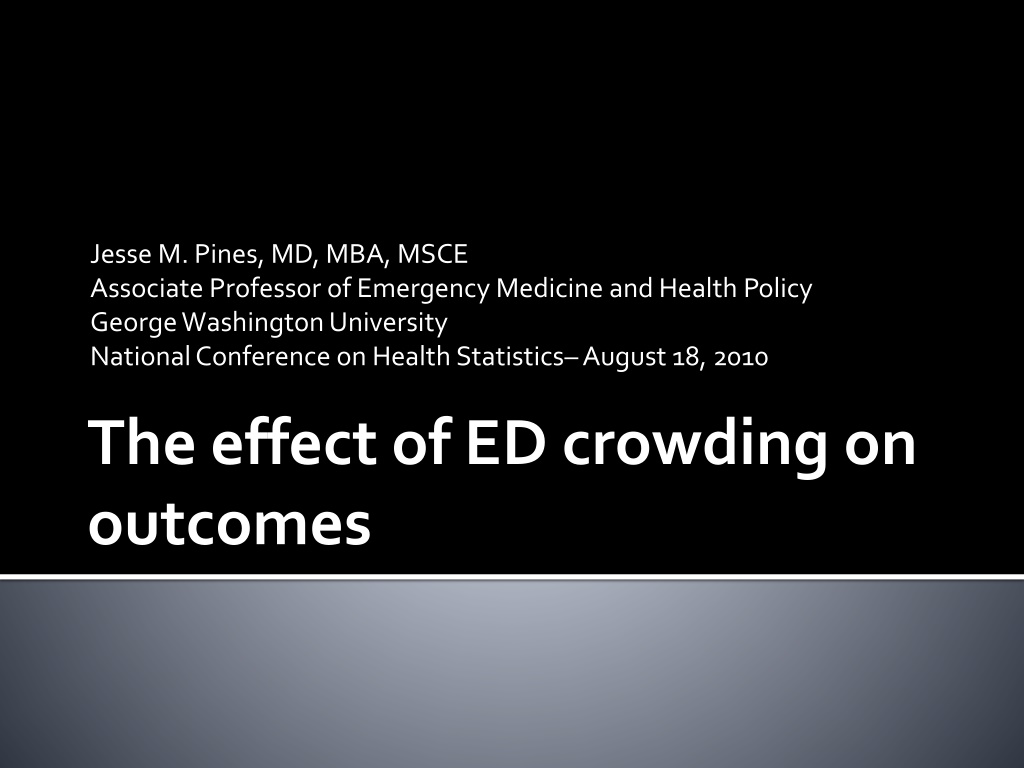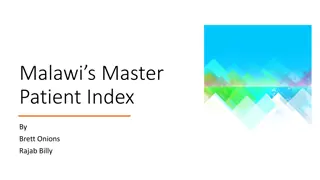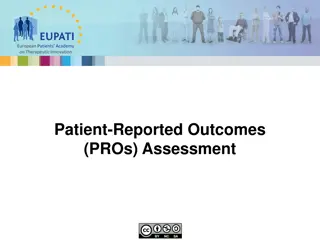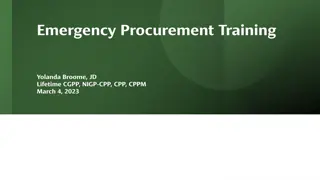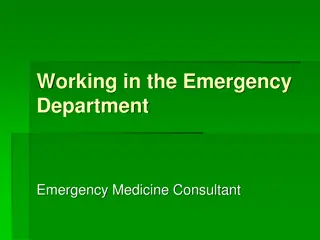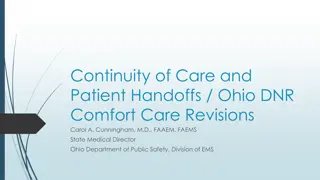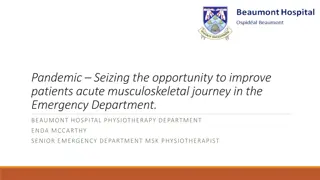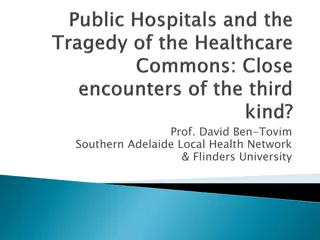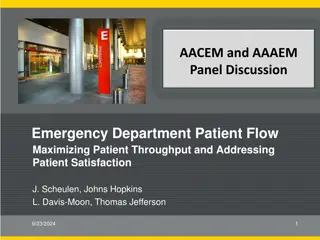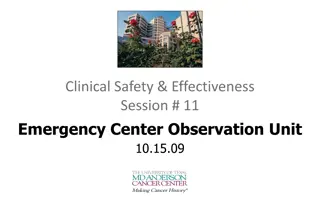Impacts of Emergency Department Crowding on Patient Outcomes
Emergency Department (ED) crowding leads to lower satisfaction, delays in care, higher error rates, and increased complications, ultimately affecting patient outcomes. Studies show a strong correlation between ED crowding and adverse health outcomes, highlighting the need for effective strategies to manage and mitigate crowding issues in healthcare settings.
Download Presentation

Please find below an Image/Link to download the presentation.
The content on the website is provided AS IS for your information and personal use only. It may not be sold, licensed, or shared on other websites without obtaining consent from the author. Download presentation by click this link. If you encounter any issues during the download, it is possible that the publisher has removed the file from their server.
E N D
Presentation Transcript
Jesse M. Pines, MD, MBA, MSCE Associate Professor of Emergency Medicine and Health Policy George Washington University National Conference on Health Statistics August 18, 2010 The effect of ED crowding on outcomes
The problem of ED crowding ED crowding is a periodic supply- demand mismatch Effects Lower satisfaction Delays Errors &Complications Mortality
An exposure to crowding Exposure When is the ED at peak capacity Ways to measure ED occupancy, census, waiting room number, NEDOCS, EDWIN, others The effect of crowding is longer time intervals Many studies have studied the link between longer intervals and outcomes
Satisfaction Major reason for ED dissatisfaction: long waits LWBS is related to long waits Higher LWBS rates during higher episodes of crowding ED crowding associated with lower ED satisfaction scores People don t forget ED length of stay & hallway placement predict lower OVERALL hospital satisfaction Pines Acad Emerg Med 2009
Satisfaction Are these LWBS patients inconsequential? Patients who LWBS are high risk 60% of LWBS patients seek medical attention within one week 11% hospitalized or require emergency surgery Rowe Acad Emerg Med 2006 Baker JAMA 1991
Delays in care Pneumonia care More likely to experience delays in antibiotics 31% had abxafter four hours during least crowded, 72% at most crowded times Pain management More likely to experience delays with acute pain Hip fracture Abdominal pain Back pain Severe pain Pines Ann Emerg Med 2008 Hwang Med Care 2006 Mills Acad Emerg Med 2009
Errors and complications High workload is a significant factor in medical errors More than 25% of patients have one or more undesirable events while boarding in the ED Patients with chest pain 3-5x more likely to have a post-ED complication Trauma patients who spend > 6 hours in ED intubated more likely to get ventilator pneumonia Liu Ann EmergMed 2009 Horowitz Ann EmergMed 2009 Pines AcadEmergMed 2009 Carr J Trauma 2007
Mortality Australian studies Crowding - risk factor 10-day mortality (RR 1.34) Higher ED & hospital occupancy associated with higher 2, 7, and 30-day mortality (HR 1.2-1.3) ED LOS > 6 hours associated with higher inpatient mortality in ICU patients 12.9% < 6 hours; 17.4% > 6 hours Differences persist after adjustment Richardson Med J Aust 2006 Sprivulis Med J Aust 2006 ChalfinCritCare Med 2007
Is the link ubiquitous? Likely no! Some populations are unlikely to be harmed by crowding The first few hours of obviously critically ill patients Difference is harm by hospital Multi-center studies are needed NHAMCS may be potentially used to demonstrate the risks of crowding
